Sidewall belt conveyor comprises a driving device, a driving roller, a reversing roller, an upper supporting roller, a press pulley, a supporting roller, and a sidewall belt conveyor: The baffle conveyor belt includes a base belt, a baffle and a transverse baffle, and the baffle is corrugated, bonded or secondary vulcanized on both sides of the base band, and there is an empty edge between the baffle and the edge of the base band, and the transverse baffle is bonded or vulcanized on the base band between the two sides of the baffle at a certain distance, and the baffle on both sides and the two adjacent transverse baffle jointly surround the cavity. The baffle conveyor belt includes a plurality of cavities, and the materials loaded in the cavity are: The end of the loading is the tail, and the tail is arranged to change the drum: The end of the unloading is the head, and the transmission drum is arranged, and the transmission drum and the drive device are connected by a coupling, clutch or hydraulic couple: The flange conveyor belt is wound between the tail reversing drum and the transmission drum, and at the position where the running angle needs to be changed, the reversing drum is arranged on the non-working face, that is, the turning position of the side without the retaining edge, and the reversing drum is arranged on the working face, that is, the turning position of the side with the retaining edge, and the rim of the pressing belt wheel is fitted with the empty edge: In the position where the flange conveyor belt runs in a straight line, the position with the working face down is arranged to support the self-weight of the flange conveyor belt: The flange conveyor has a suitable ore-intensifying force. When the driving device drives the transmission drum to run continuously, the transmission drum drives the flange conveyor belt to run continuously through friction. The working side, that is, the side carrying material, runs from the tail to the head in the upper part; the return side, that is, the side winding back to the tail after unloading is completed; the lower part, runs from the head to the tail. The reversing rollers, belt rollers, upper rollers and belt rollers rotate passively: The working side includes the loading section and the unloading section. In the loading section, the loading chute at the tail of the machine continuously loads the material into the cavity of the side-guard conveyor belt, and the side-guard conveyor belt can continuously transfer the material to the unloading section of the machine head and dump it on the receiving equipment behind, thus completing the conveying of the material.
.jpg)
Sidewall belt conveyor has the advantages of simple structure, reliable operation and easy maintenance, and has the characteristics of large inclination conveying, compact structure and small footprint, so it is the ideal equipment for large inclination (even vertical) conveying, and is widely used in coal, metallurgy, building materials, food, chemical industry, electric power and other departments. In recent years,
sidewall belt conveyor has gradually developed to the direction of large lifting height and large conveying capacity, and has been used in underground mining engineering, open-pit mining, large dump ships and so on. For various reasons, the side guard conveyor belt will run off, but the performance is not obvious, that is because, in the concave arc of the working side need to set the pressure belt wheel, when the side guard conveyor belt runs off the side of the pressure belt wheel, the guard edge and the side of the pressure belt wheel friction running: A belt roller should be arranged at every interval on the return side. When the conveyor belt is deflect, the guard edge rests on the end face of the belt roller, and the guard edge and the end face of the belt roller run in friction. However, the flange of the flange conveyor belt is often the first to wear, so that the flange conveyor belt is easy to leak material, and finally can no longer be used and needs to be replaced. The price of the side conveyor belt is very expensive, the manufacturer has suffered great losses, and effective measures need to be taken to prevent the side conveyor belt from running off.
The purpose of our design is to overcome the shortcomings of the existing technology, adapt to the practical needs, and provide a sidewall belt conveyor that can prevent deviation. [this is achieved through the following technical solutions: The sidewall belt conveyor is a
sidewall belt conveyor that can prevent deviation, including a sidewall conveyor belt, a belt roller and a press belt wheel, and the sidewall conveyor includes a base belt, a guard edge and a transverse partition. The guard edge is fixed connected to both sides of the base band, and there is an empty edge between the guard edge and the base band edge, and the transverse partition is fixed connected to the base band between the two sides of the guard edge. The flange on both sides and the two adjacent transverse partitions are enclosed together into a cavity: A pressure belt wheel is arranged in the position with the working face up, and the rim of the pressure belt wheel is fitted with the empty edge: A belt roller is arranged in the position with the working face down to support the self-weight of the belt with the retaining edge; its feature is that the belt with the retaining edge also includes a guide bar, arranged on the empty edge of the working face, and the cross section is trapezoid: A guide groove is provided on the roller edge of the belt roller, and the cross section of the guide groove is trapezoid: The rim of the press belt wheel is provided with a guide groove, and the cross section of the guide groove is trapezoid: The guide rib is embedded in the guide groove. Beneficial effects are achieved: With the guiding role of the guide bar, the belt conveyor on the rib runs along the guide bar when running, no longer deviates, the rib no longer frictions the side of the belt wheel or the end face of the belt roller, and the service life of the belt conveyor on the rib is greatly extended, saving a lot of maintenance funds for the manufacturer.


.jpg)

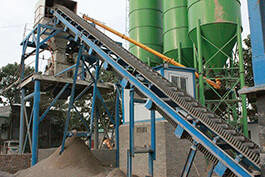
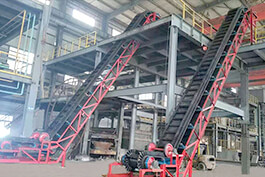
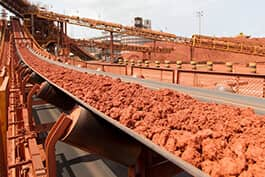
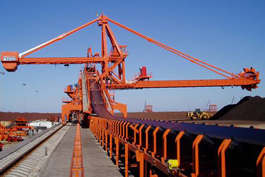
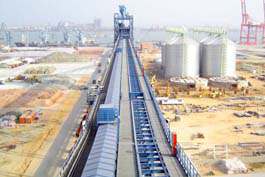
.jpg)


